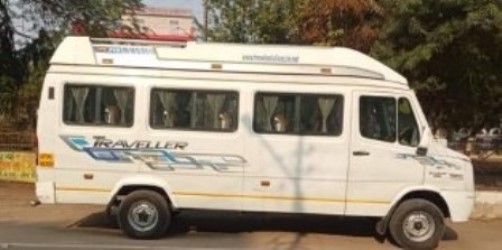Lucknow to Ayodhya by Tempo Traveller
Same Day Ayodhya Trip with family- perfect for a weekend trip to explore a holy city
Ayodhya is a city situated on the banks of holy river Saryu in the Indian state of Uttar Pradesh. Ayodhya, also known as Saketa, is an ancient city of India, is the birthplace of Rama and setting of the great epic Ramayana. Ayodhya used to be the capital of the ancient Kosala Kingdom. It has an average elevation of 93 meters (305 feet). Owing to the belief as the birthplace of Rama, Ayodhya (Awadhpuri) has been regarded as first one of the seven most important pilgrimage sites (Mokshdayini Sapt Puris) for Hindus.
The early Buddhist and Jain canonical texts mention that the religious leaders Gautama Buddha and Mahavira visited and lived in the city. The Jain texts also describe it as the birthplace of five tirthankaras namely, Rishabhanatha, Ajitanatha, Abhinandananatha, Sumatinath and Anantnath, and associate it with the legendary Bharata Chakravarti. From the Gupta period onwards, several sources mention Ayodhya and Saketa as the name of the same city.Owing to the belief as the birthplace of Ram, Ayodhya has been regarded as one of the holy city even most important pilgrimage sites for Hindus. It is believed that a temple stood at the supposed birth spot of Rama, which was demolished by the orders of the Mughal emperor Babur and a mosque erected in its place. The word “Ayodhya” is a regularly formed derivation of the Sanskrit verb yudh, “to fight, to wage war”. Yodhya is the future passive participle, meaning “to be fought”; the initial a is the negative prefix; the whole, therefore, means “not to be fought” or, more idiomatically in English, “invincible”.This meaning is attested by the Atharvaveda, which uses it to refer to the unconquerable city of gods.The ninth century Jain poem Adi Purana also states that Ayodhya “does not exist by name alone but by the merit” of being unconquerable by enemies. Satyopakhyana interprets the word slightly differently, stating that it means “that which cannot be conquered by sins” (instead of enemies).”Saketa” is the older name for the city, attested in Sanskrit, Jain, Buddhist, Greek and Chinese sources.According to Vaman Shivram Apte, the word “Saketa” is derived from the Sanskrit words Saha (with) and Aketen (houses or buildings). The Adi Purana states that Ayodhya is called Saketa “because of its magnificent buildings which had significant banners as their arms”. According to Hans T. Bakker, the word may be derived from the roots sa and ketu (“with banner”); the variant name saketu is attested in the Vishnu Purana. Ayodhya was stated to be the capital of the ancient Kosala kingdom in the Ramayana. Hence it was also referred to as “Kosala”. The Adi Purana states that Ayodhya is famous as su-kośala “because of its prosperity and good skill”.
The cities of Ayutthaya (Thailand), and Yogyakarta (Indonesia), are named after Ayodhya.
If you are travelling to Ayodhya after taking bath in holy Saryu River take Darshan of Ram lala in Ram Mandir. then explore Hanuman Gadhi, Kanak Bhawan, Ram ki paidi.
Fare Details:-
Tempo Traveller 12-seat @ Rs. 7000/-
Tempo Traveller 16-Seat @ Rs. 8000/-
Tempo Traveller 24-Seat @ Rs. 9500/-
If you are planning for a Same day Ayodhya tour by Tempo Traveller from Lucknow, then the journey should begin, at early morning to return after the trip by 8 PM to Lucknow.
Note: This fare is Approximate.



